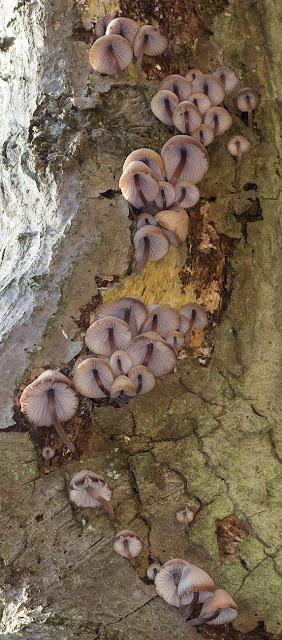 |
| Mycena crocata. Keston Common, 7 October 2012. |
It seems to me that most fungi are almost impossible do identify in the field. There are some pretty experienced people in the Orpington Field Club, but often the best even they can do is get the genus and maybe a good guess at the species. You need to get the spores under a microscope. But a few are unmistakeable once you know what to look for, even among the smaller and less easily distinguishable groups.
For example, Mycenas, often called Bonnets. They are small, and mostly very much alike. But a couple of them bleed when damaged. Mycena crocata, shown above, bleeds vivid saffron-coloured drops. Mycena haematopus, below, bleeds burgundy-coloured drops. The books give them obvious "common" names, Saffrondrop Bonnet and Burgundydrop Bonnet, but most of these names are recent inventions unknown to actual countryside dwellers.
 |
| Mycena haematopus. Keston Common, 11 November 2012. |
The second one was in a troop of fungi growing over my head along the trunk of a dead Oak tree. They were attractive, but just like many others until I managed to knock one off, bruising it in the process, and look at it closely.
 |
| Mycena haematopus. Keston Common, 11 November 2012. |



No comments:
Post a Comment